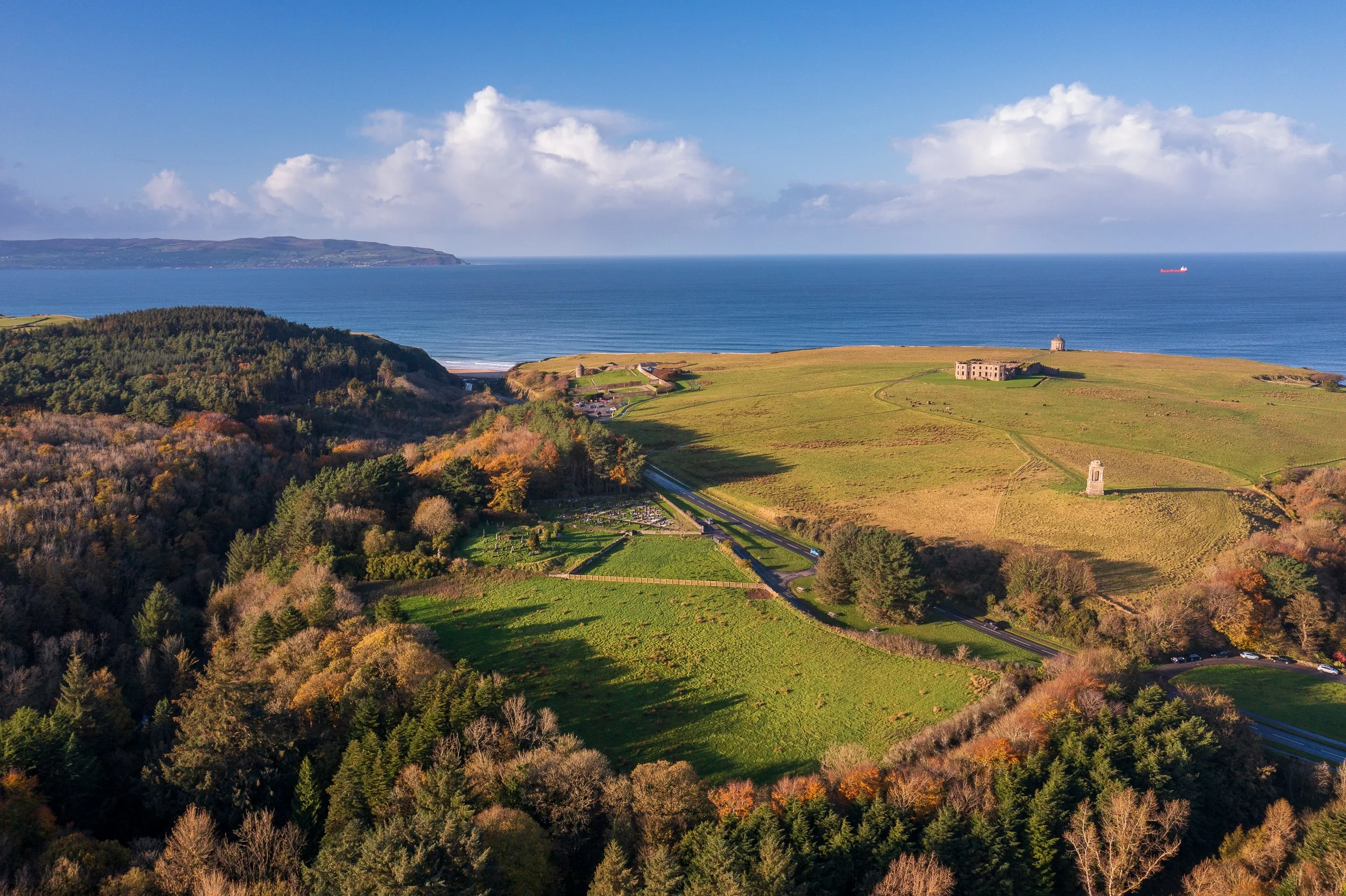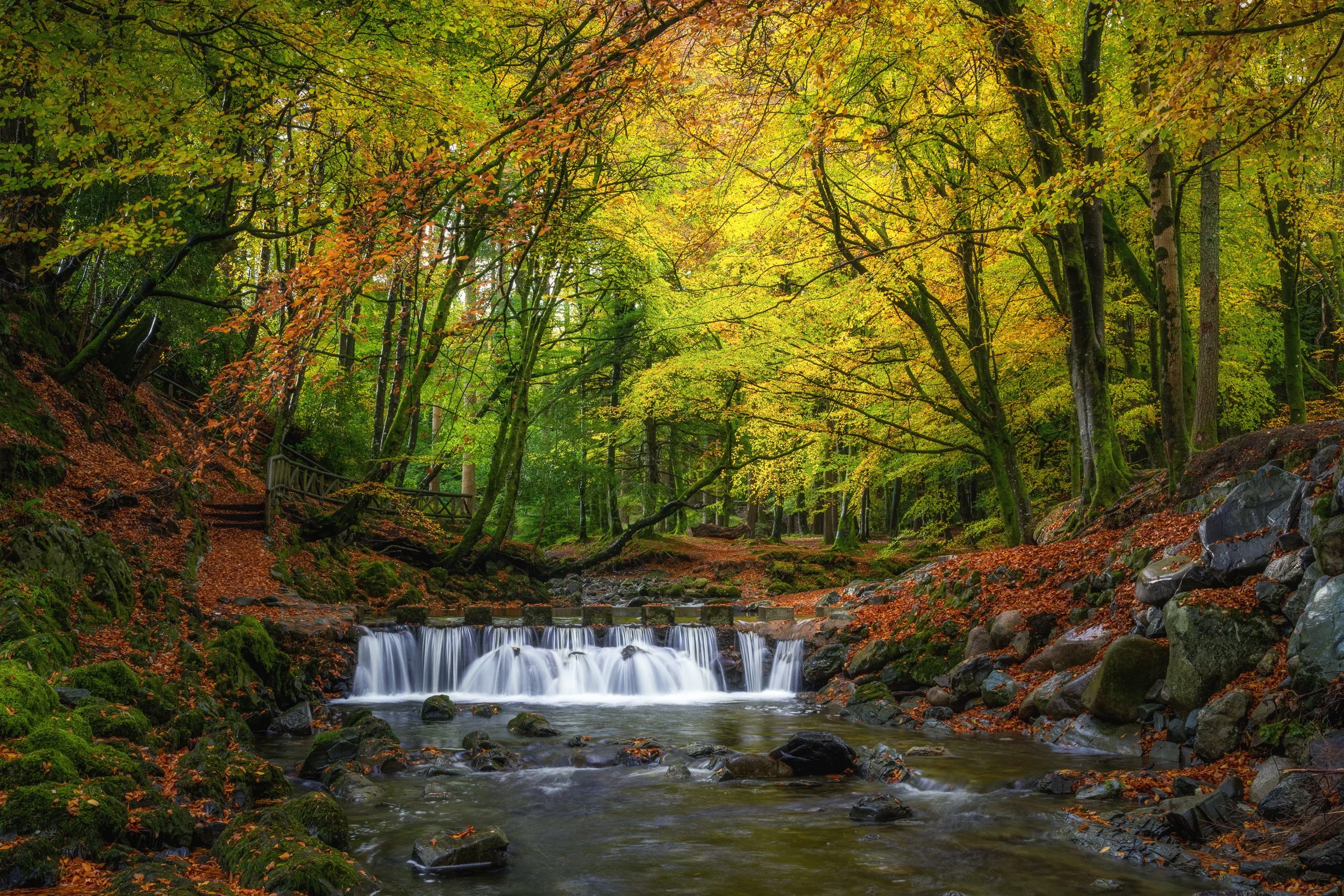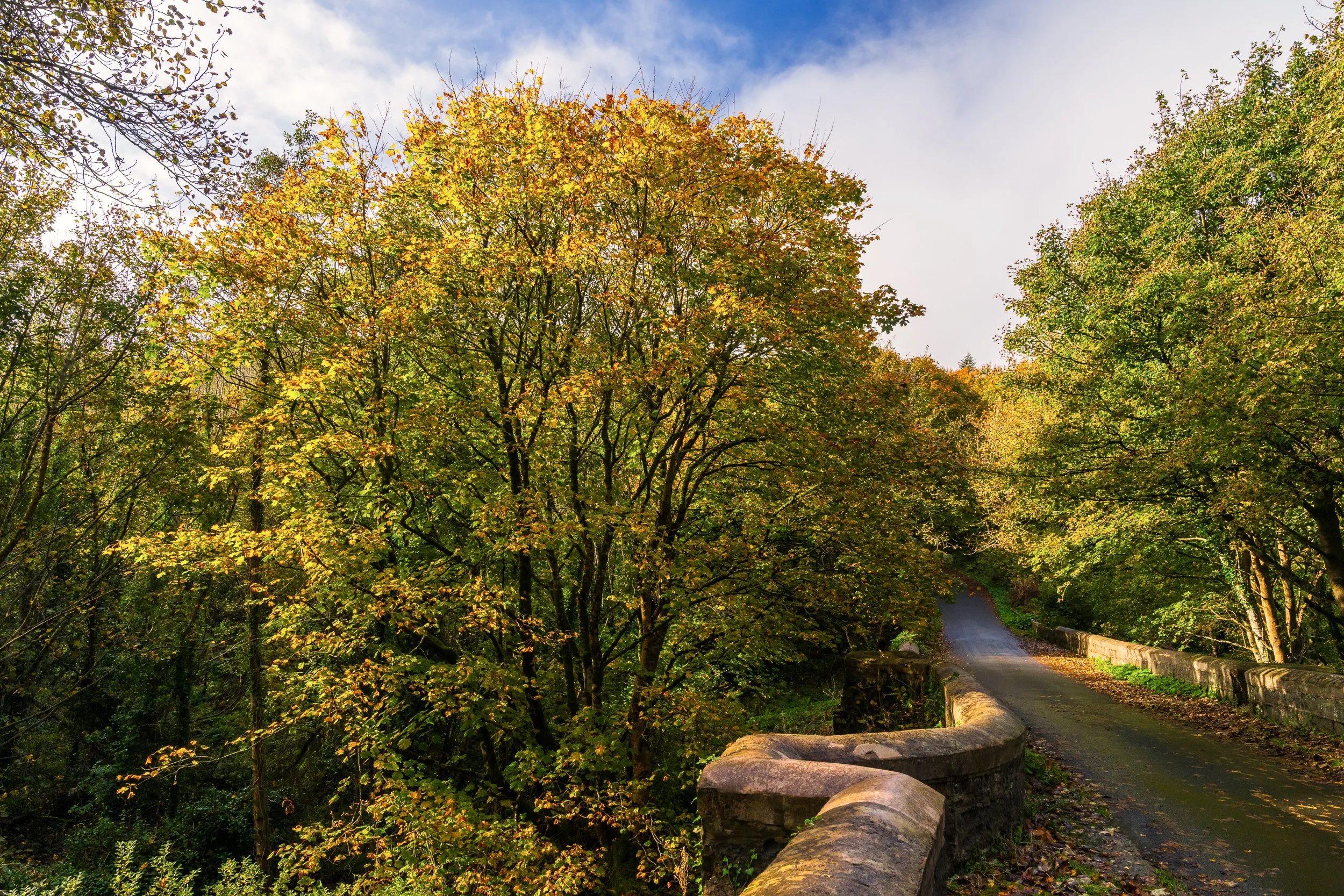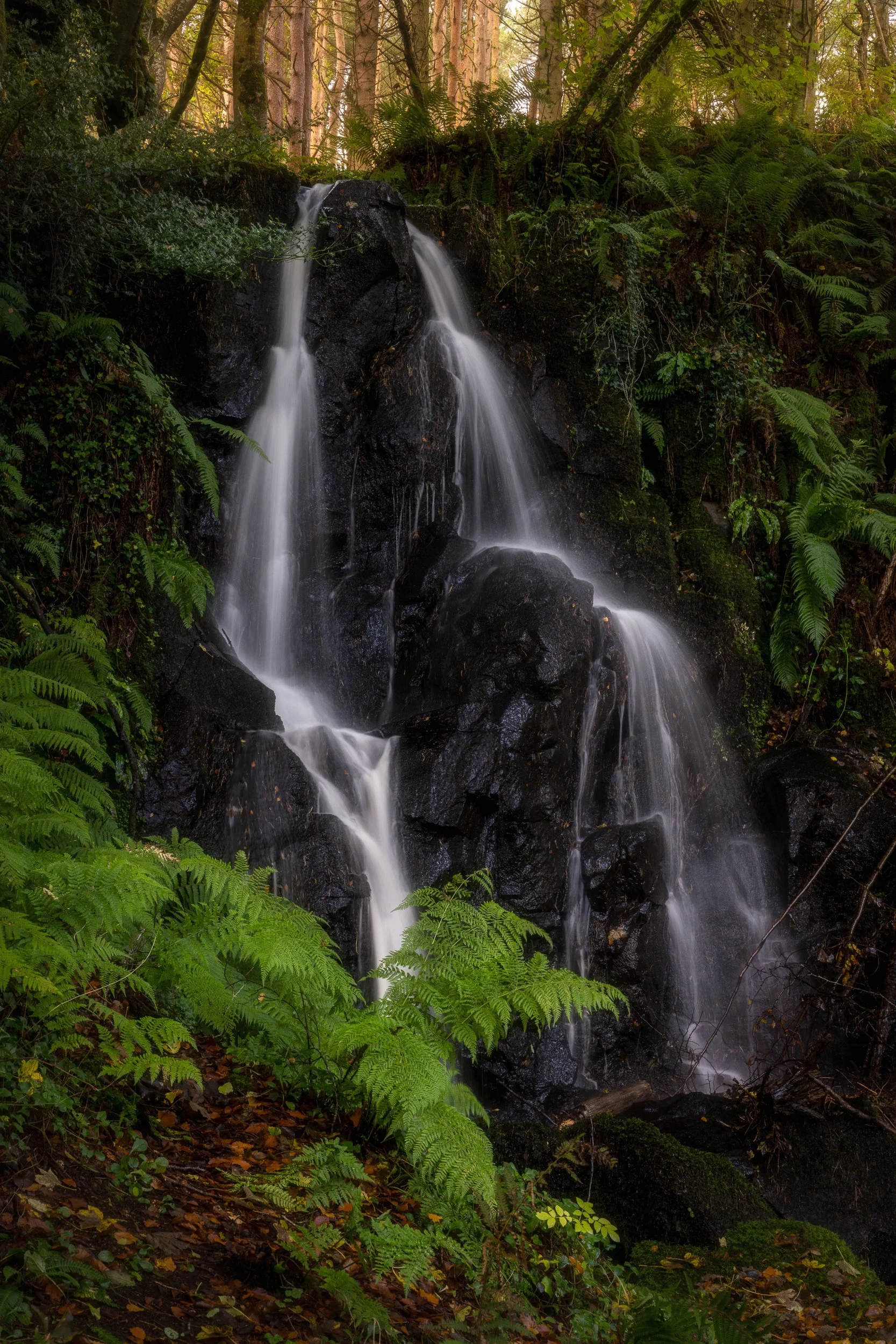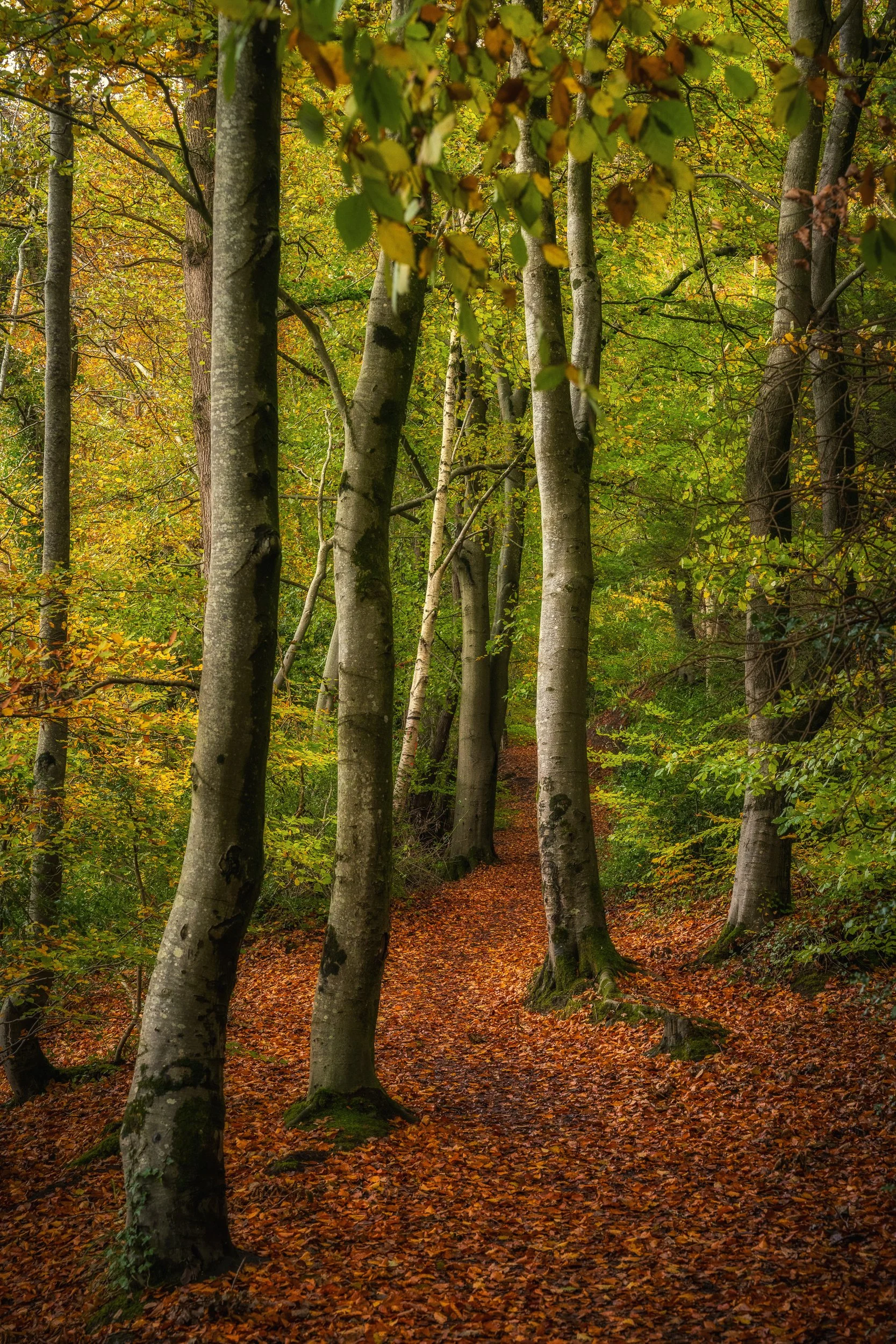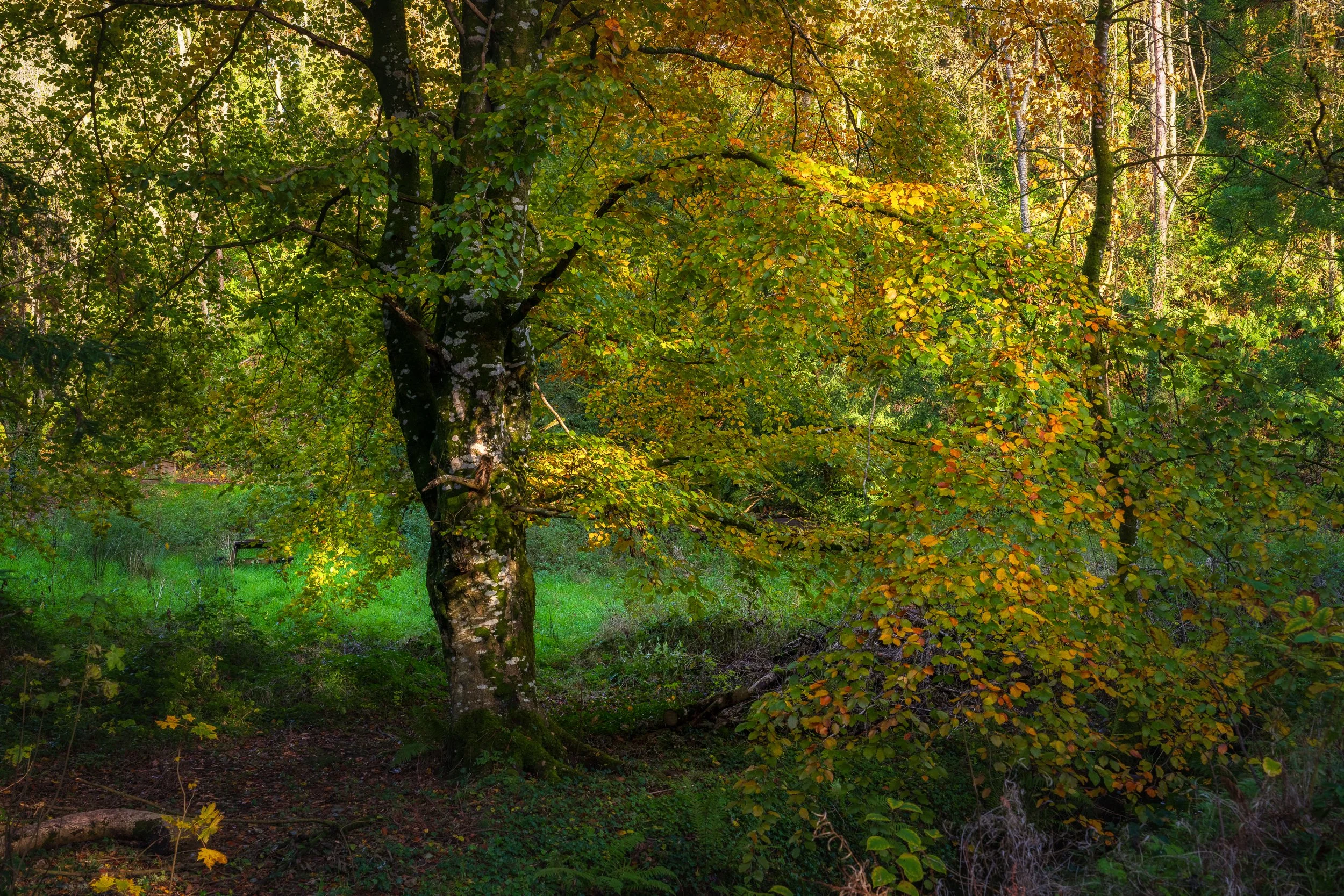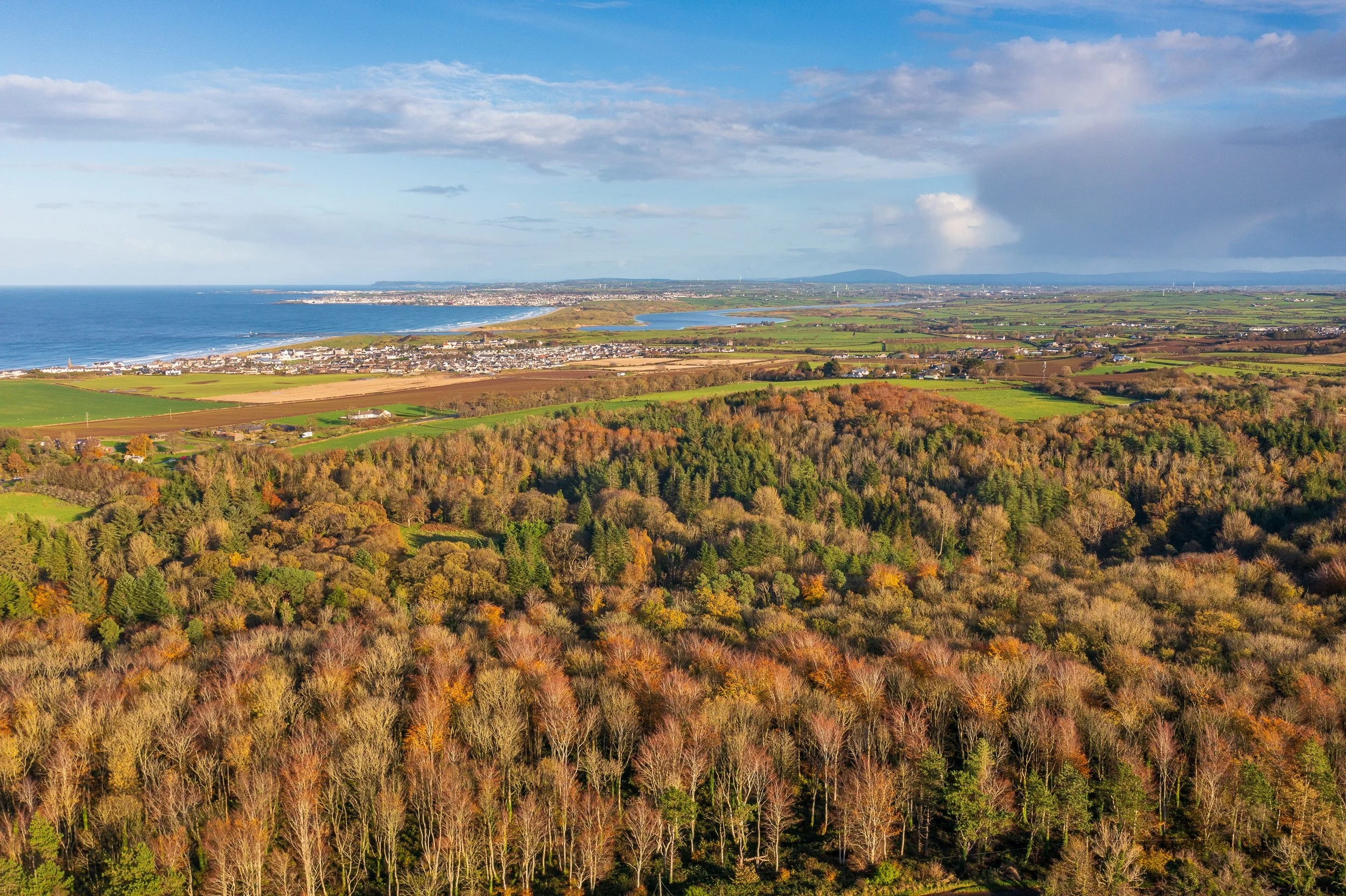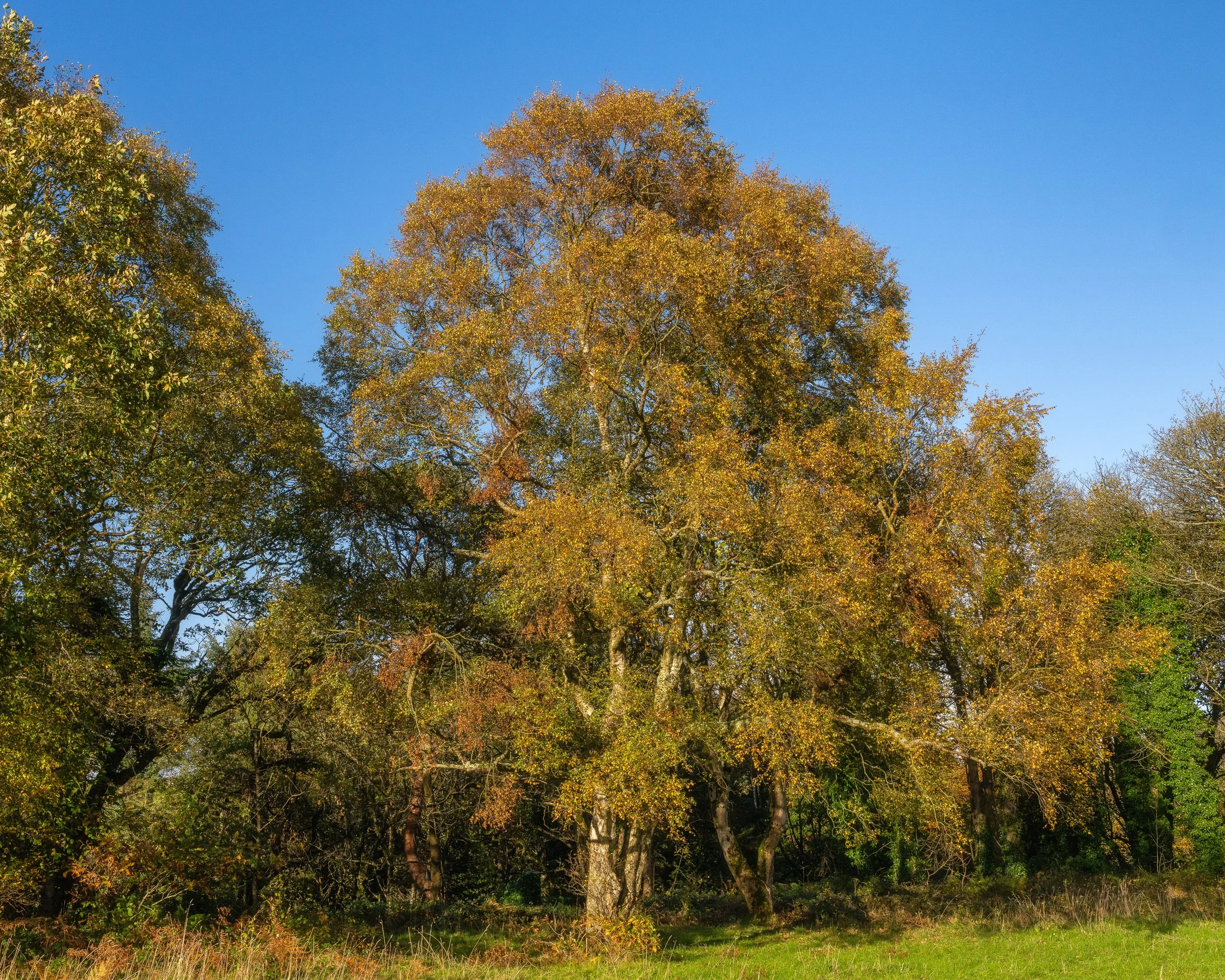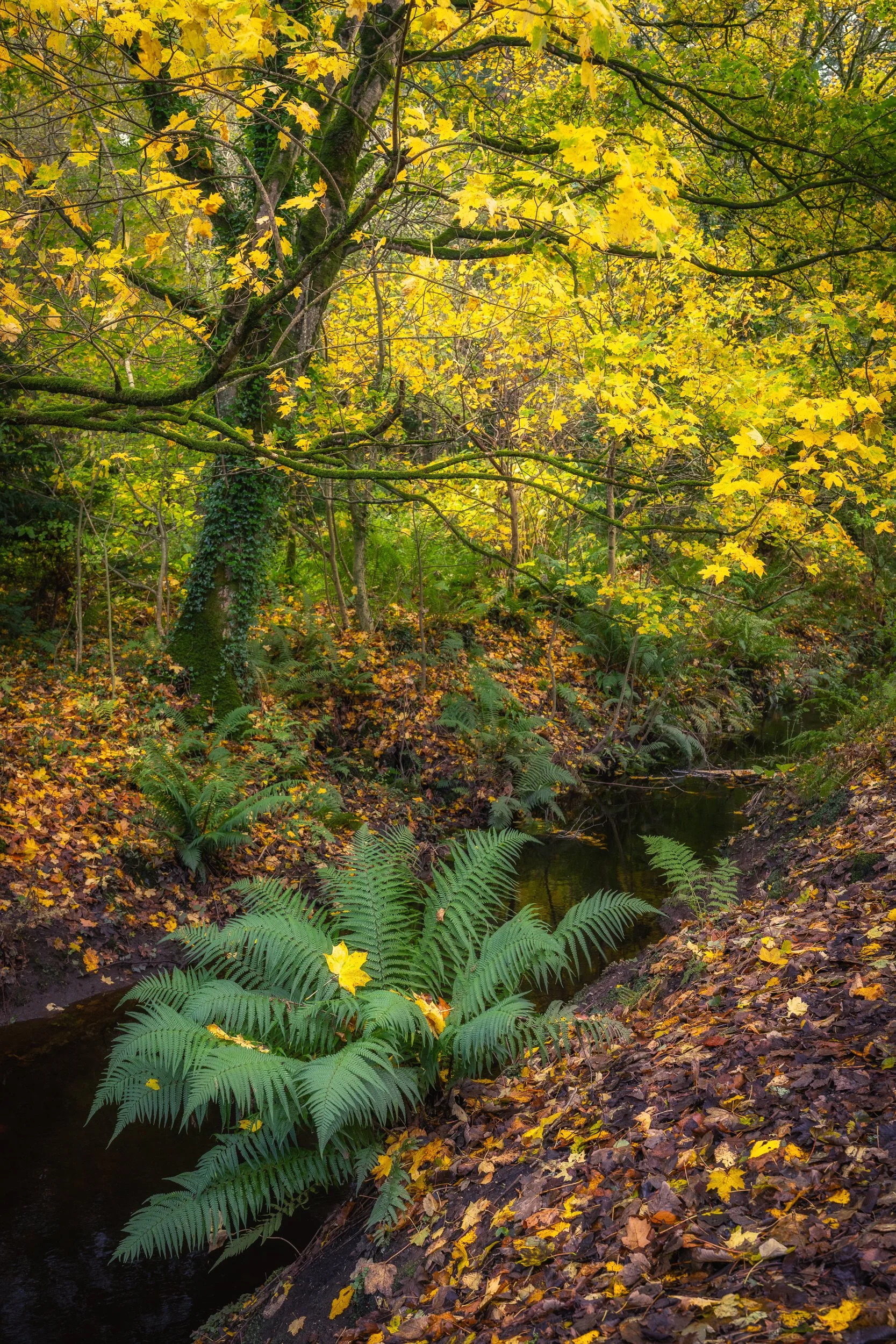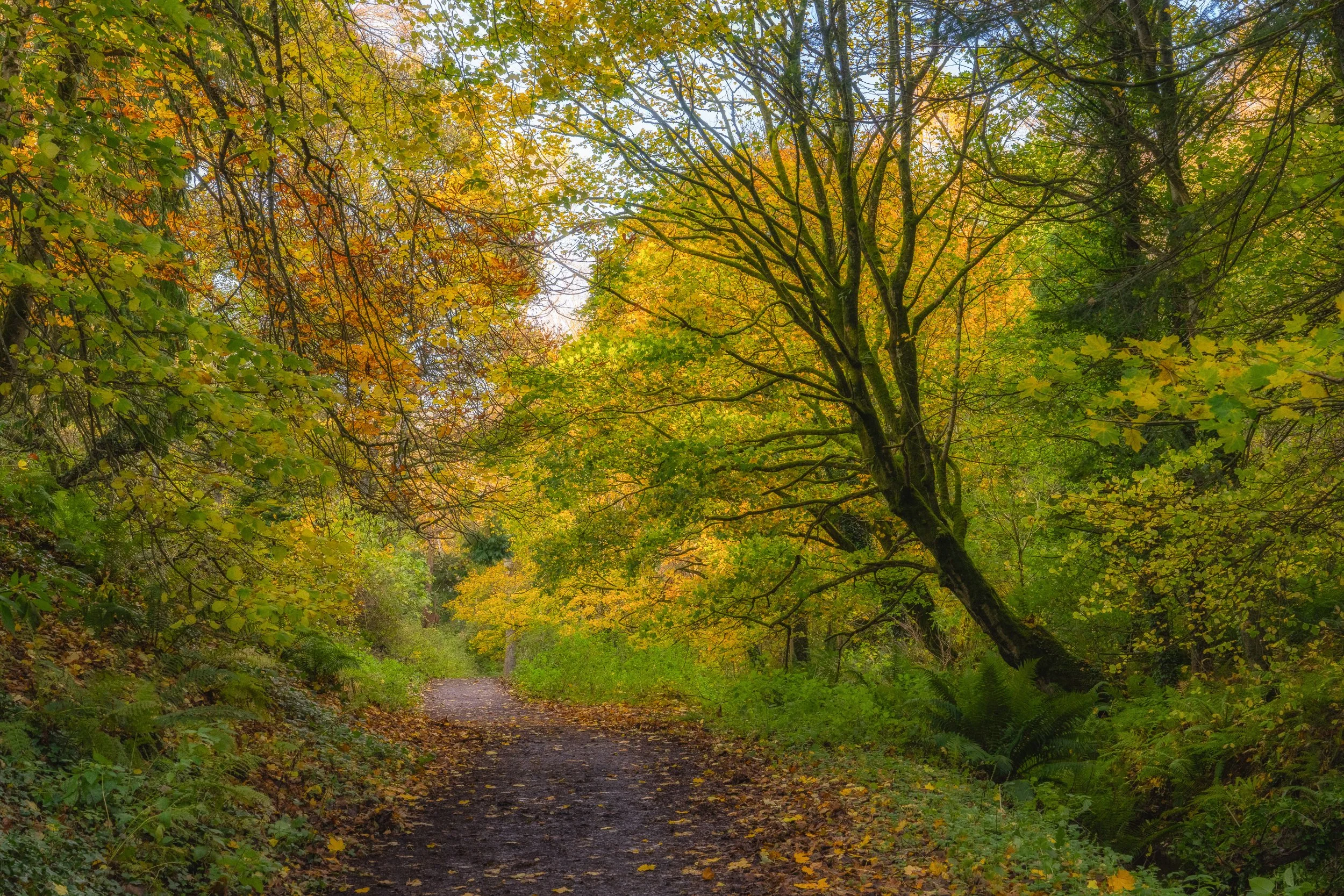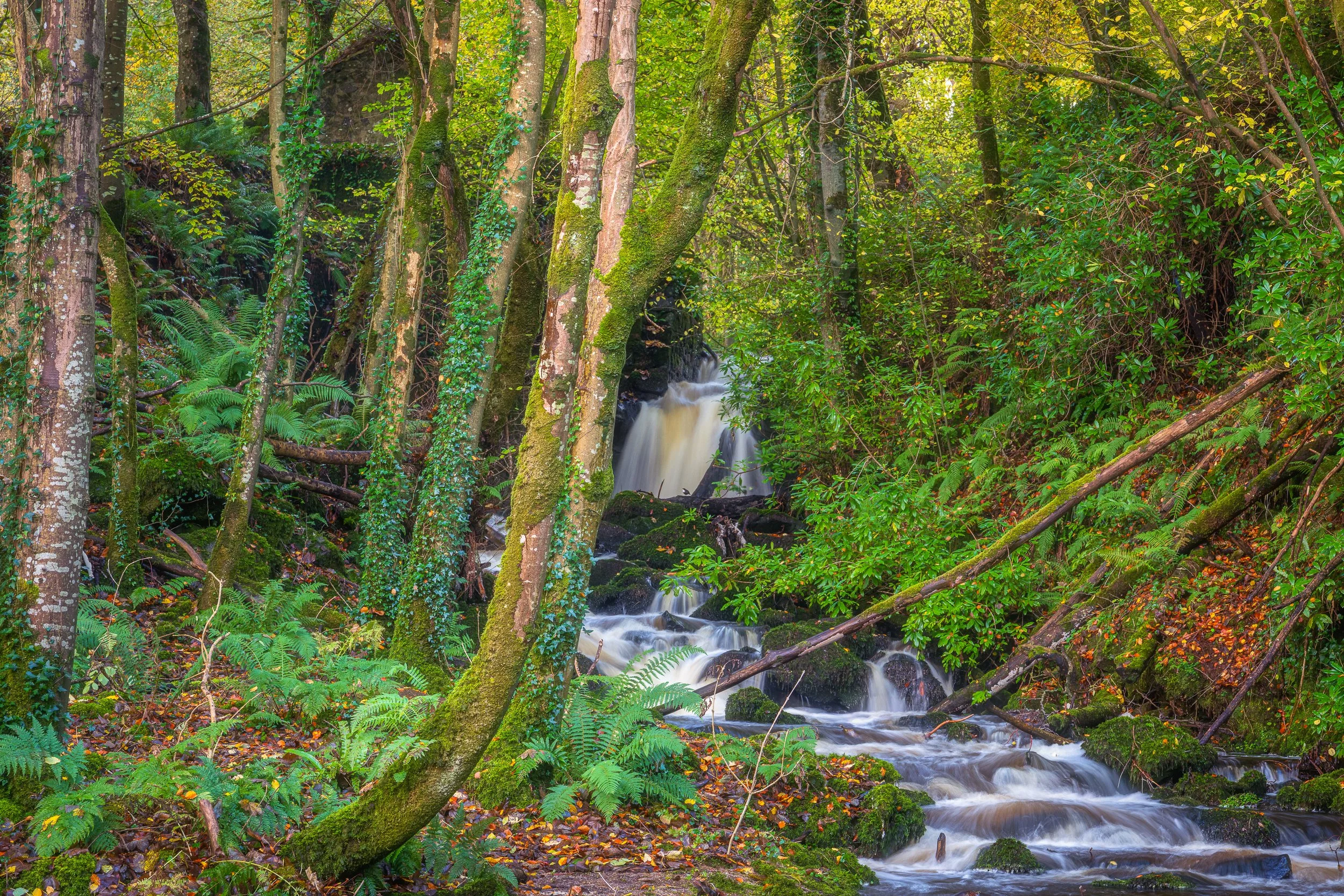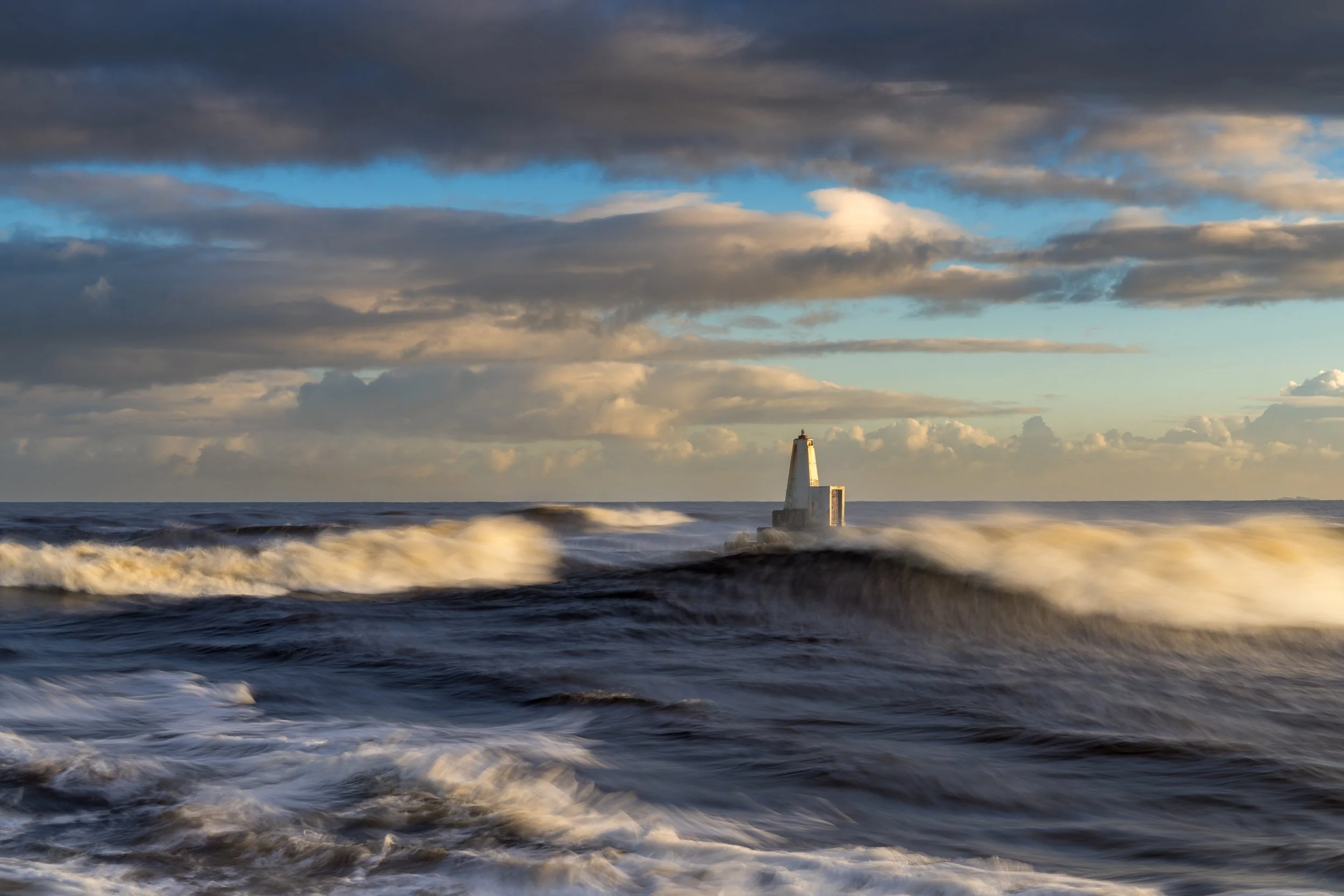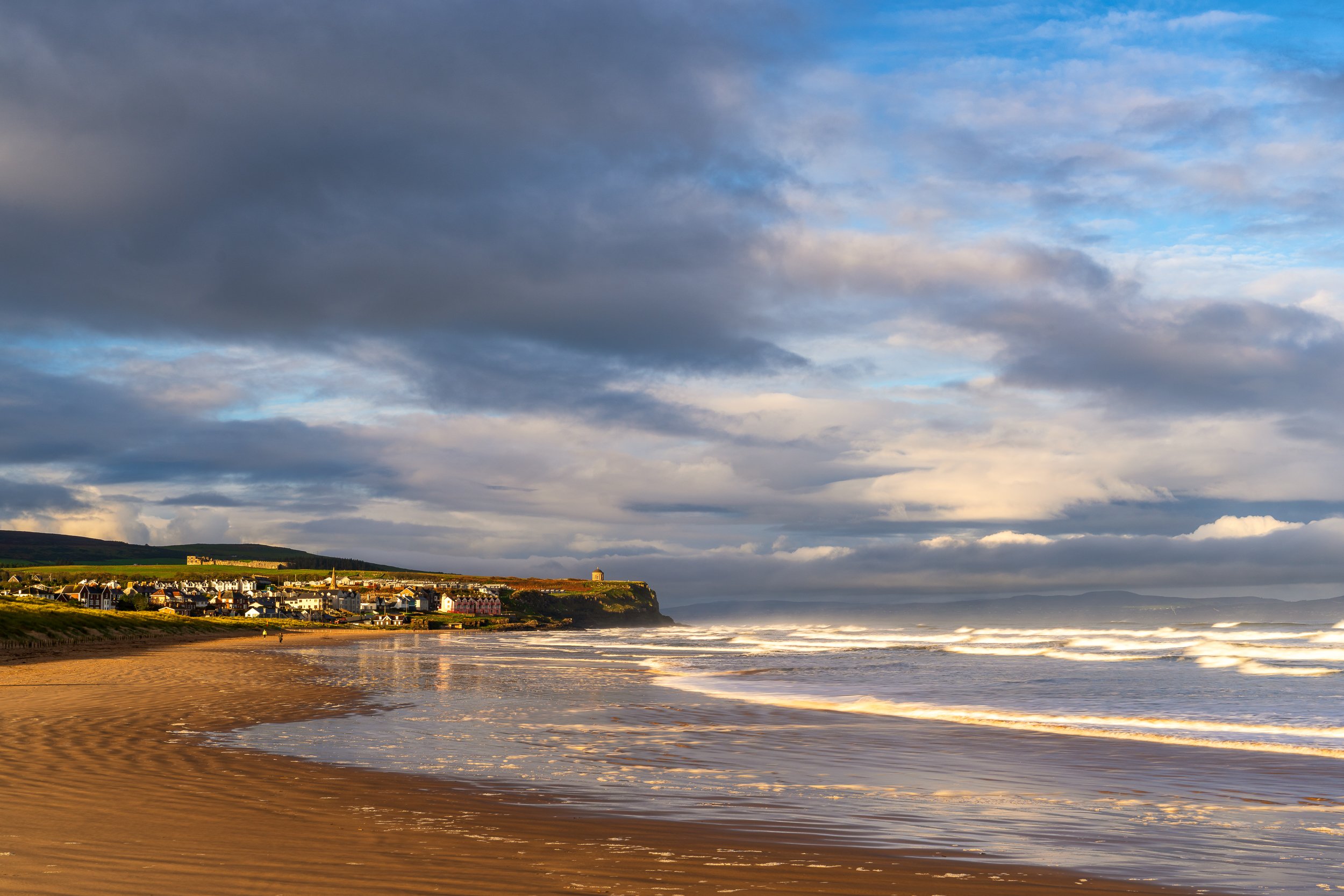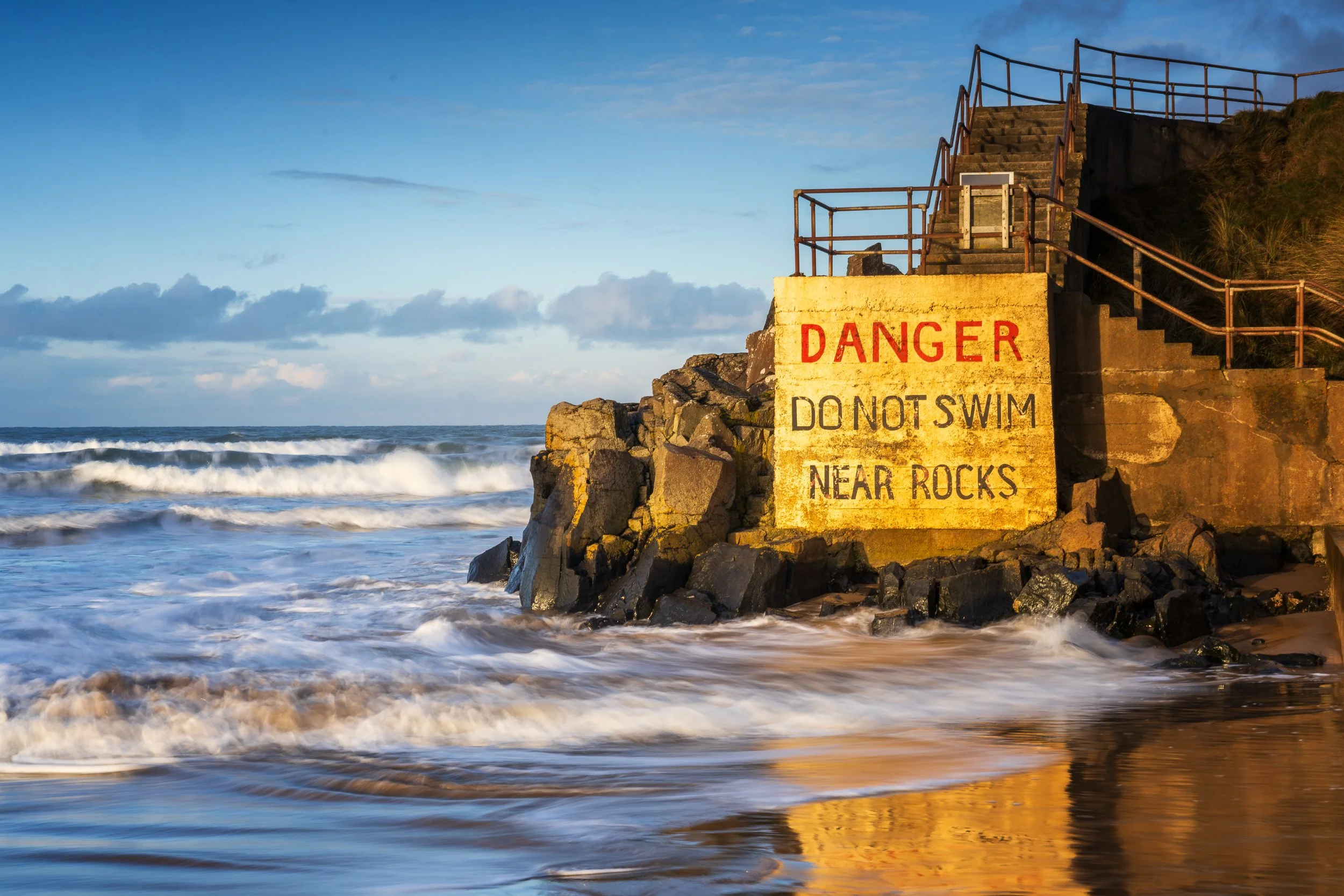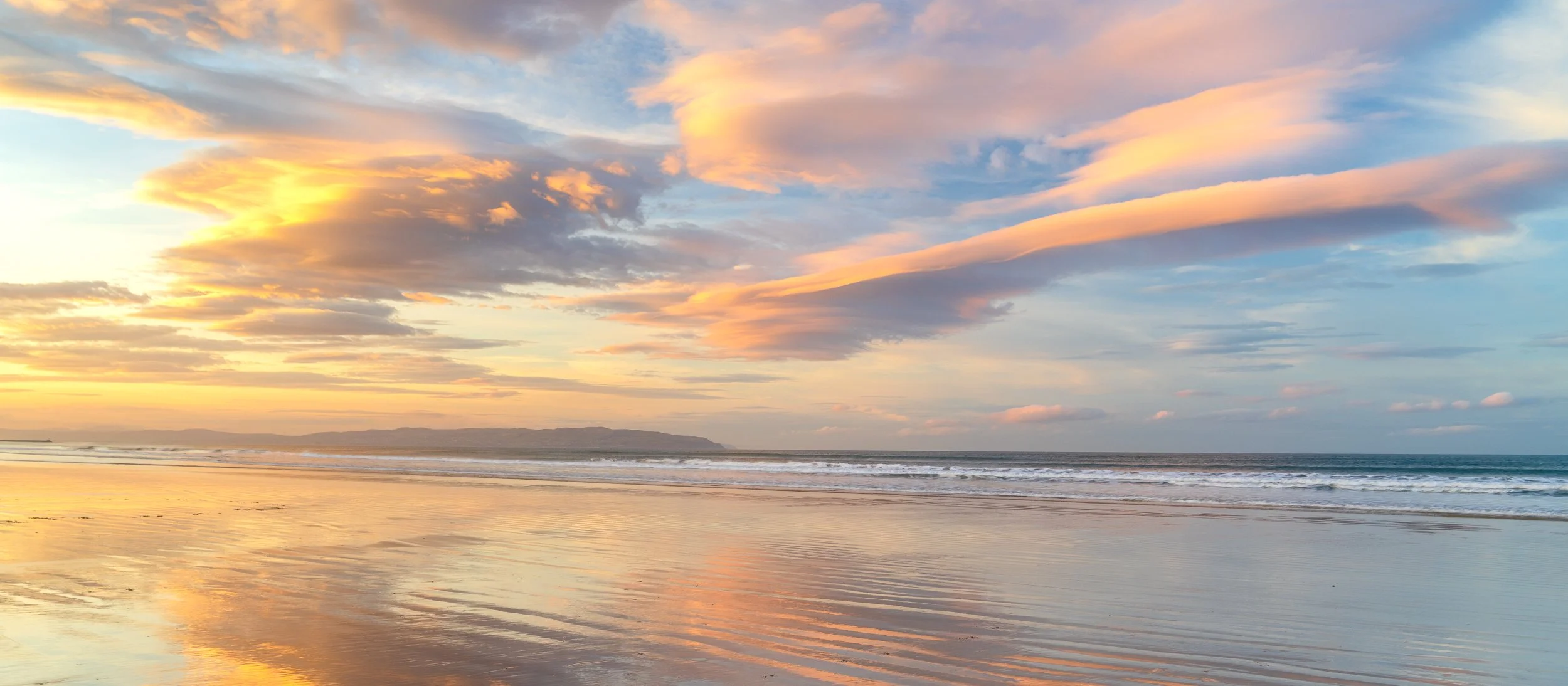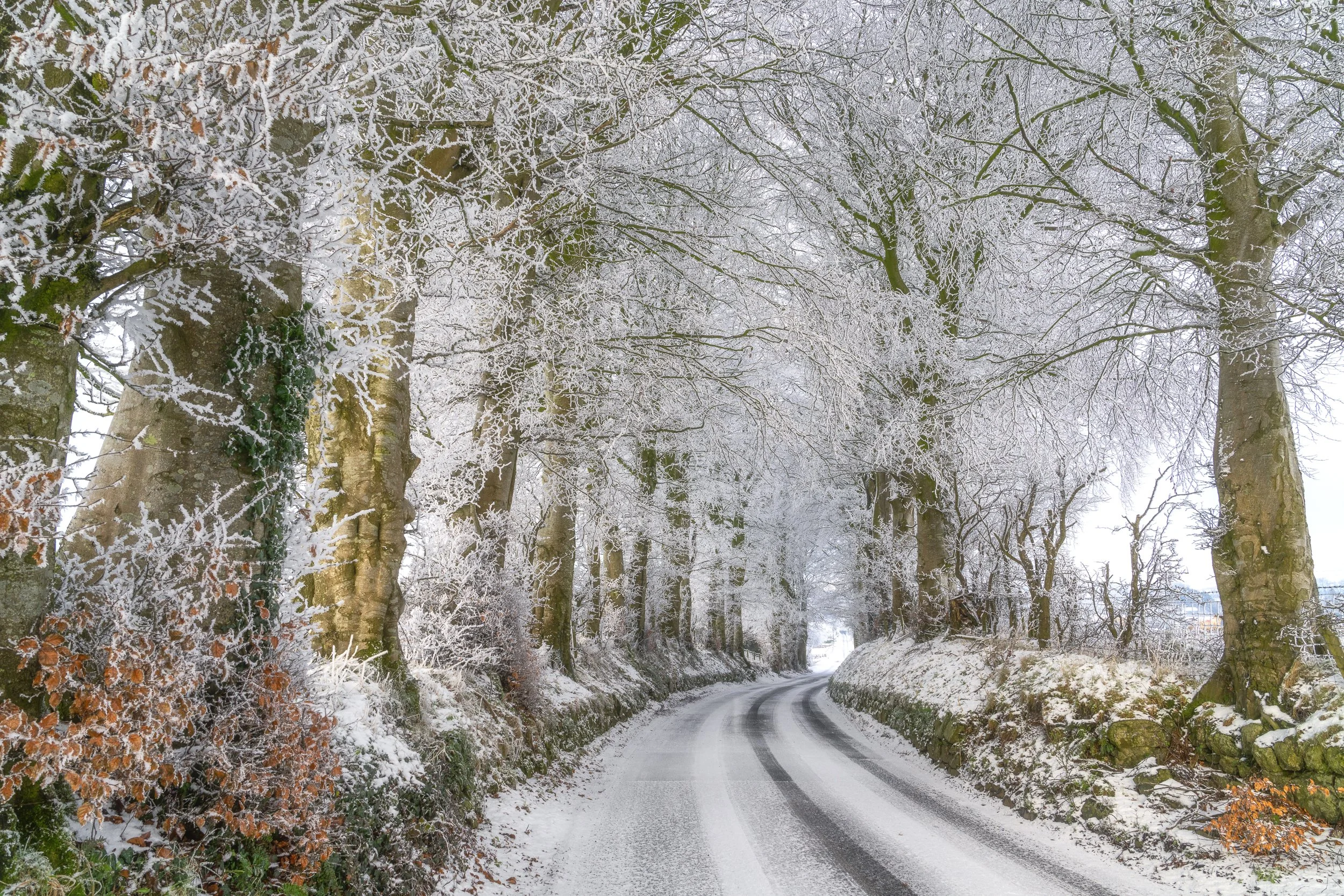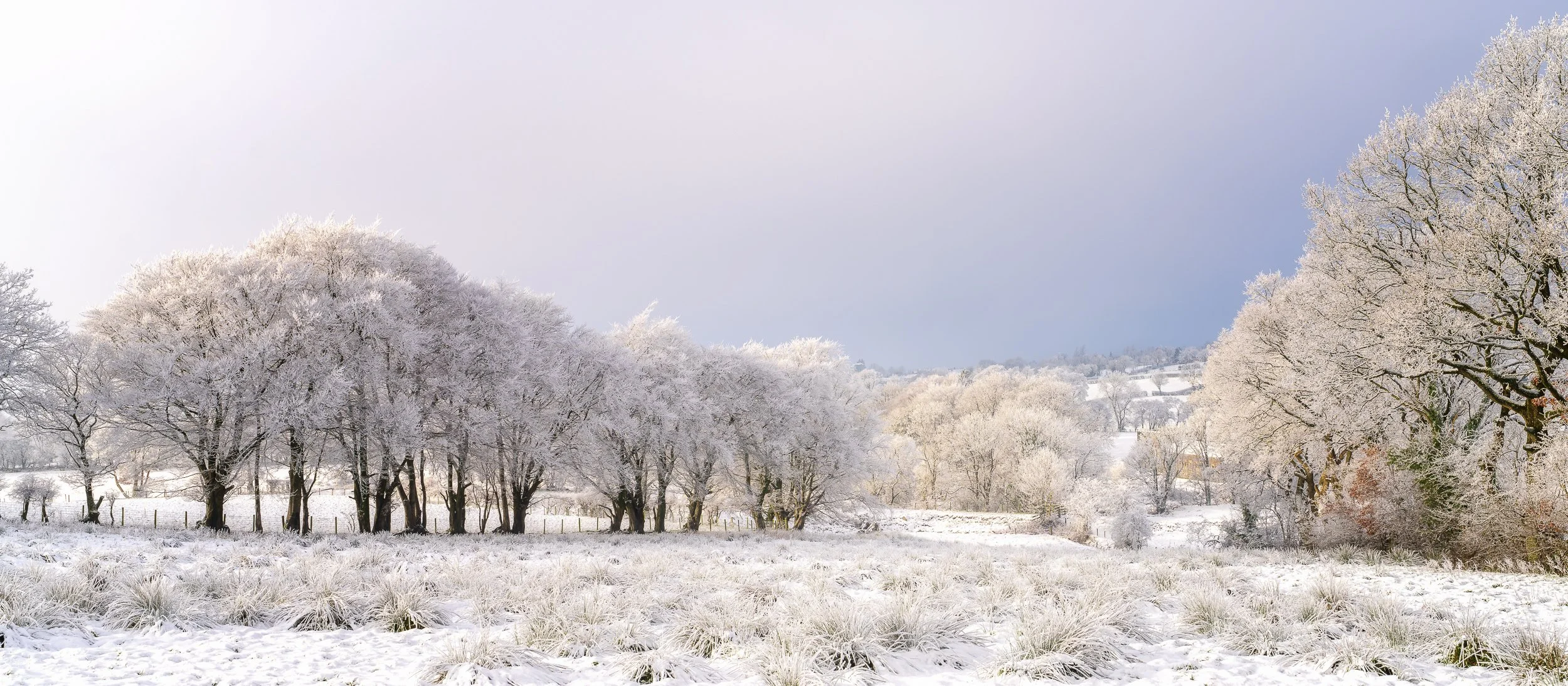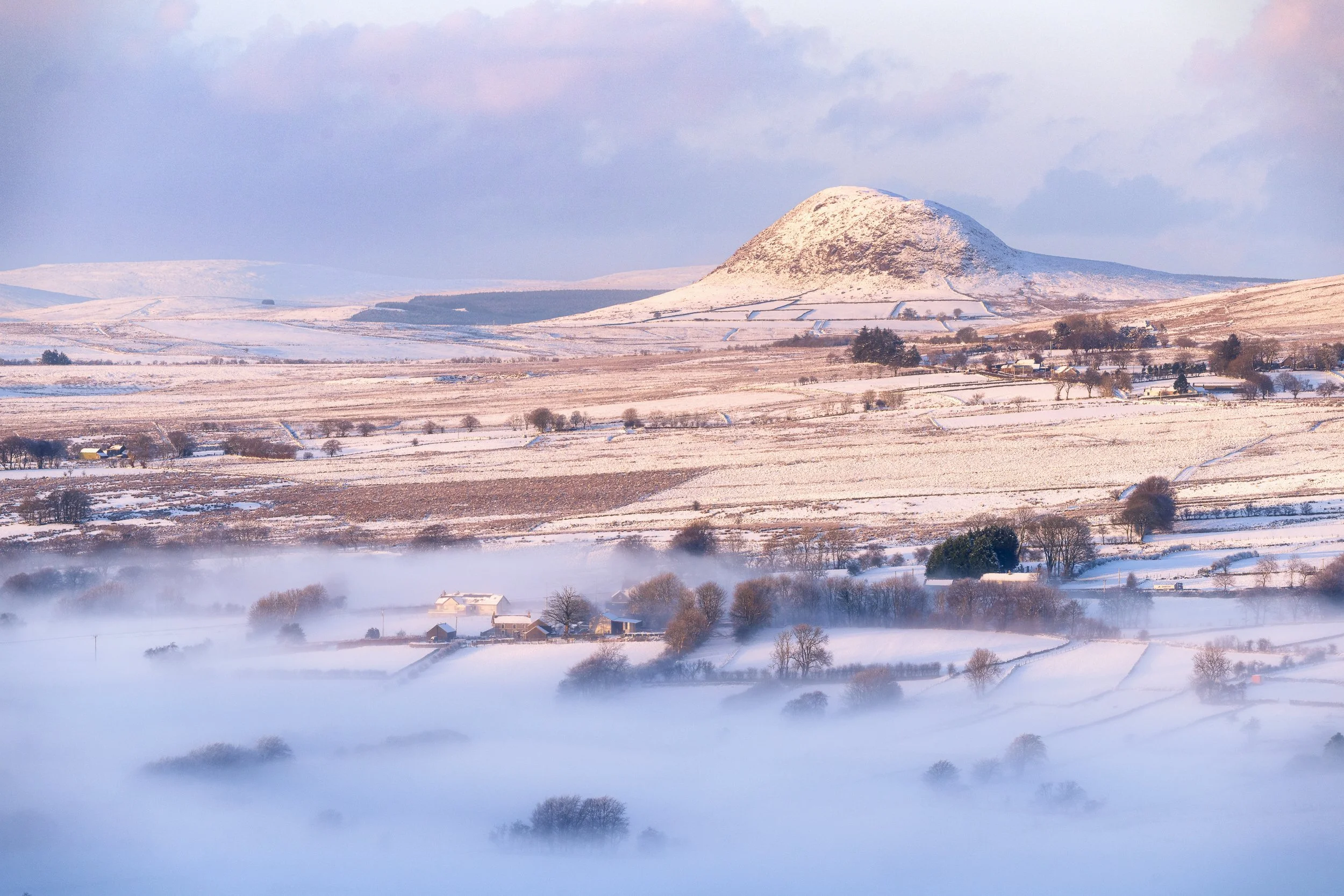
reflections
on photography and life
gold rush Part 1
There is a magic moment - a magic few days in fact - that all lovers of the outdoors look forward to each year: peak autumn colour (or fall colour for my American friends). It is the time for wandering amongst the trees, especially beech, oak, birch and maple. Since I live in one of the least forested countries in Europe, that poses a problem. Many years ago more than 80% of Ireland was covered with trees. By 1925 that was down to around 1%. Lush oak woods were everywhere. Now only a few small patches of the ancient forest remains.
There is a magic moment - a magic few days in fact - that all lovers of the outdoors look forward to each year: peak autumn colour (or fall colour for my American friends). It is the time for wandering amongst the trees, especially beech, oak, birch and maple. Since I live in one of the least forested countries in Europe, that poses a problem. Many years ago more than 80% of Ireland was covered with trees. By 1925 that was down to around 1%. Lush oak woods were everywhere. Now only a few small patches of the ancient forest remains.
For as long as I can remember, rumours of plans to plant significant numbers of native (deciduous) trees have swirled around like dead leaves in winter, but sixty years on progress has been slow. The year 2020 saw the launch of the Forests of our Future programme, with the aim of planting 18 million trees by 2030. According to a report four weeks ago, planting rates have consistently fallen well short of the target.
Autumn in Tollymore Forest Park, one of our finest forests.
But some forests and woods still remain. Arguably Counties Down and Wicklow, on the East coast, boast the best of these . However we now live in the North West! So this autumn I decided not to travel far but to explore my new back yard.
Downhill Forest
I began with Downhill Forest. Peak colour had not yet arrived. But at least the sun was shining and the trees at the edge of the forest were showing sure signs of gold. The sound of rushing water distracted me and through a gap in the undergrowth I discovered the source: a small waterfall I had searched for before but failed to find.
Downhill waterfall.
Five days later I ventured into Mountsandel Forest, on the East bank of the River Bann at Coleraine. Here amongst the usual chaos of woodland I found a part of the path that wound through a group of beech trees. I love the invitation of a path like this, with its vanishing point leading into mystery beyond.
Mountsandel Forest
The afternoon sun was shining when on the afternoon of November 1st I returned to Downhill Forest, picking out pieces of gold on the lower trunk and branches of a graceful beech.
My friend Mark who accompanied me showed me the way to a high point in the forest where there is a clearing. It is often easier to compose a photograph on the edge of a wood. And the clearing also gave me the opportunity to send up the drone.
Downhill Forest and Estate.
This was the only photo I had envisaged before going out and it came together even better than I had imagined, with the added bonus of the clouds in the background, and the tanker sitting on a blue sea. The distant headland is Inishowen in County Donegal.
Changing the direction of the drone I took another photo of the view towards the north, taking in Castlerock, Portstewart, Portrush and Coleraine in a single shot.
The clearing.
Coming back down from the clearing we followed the walkway into the forest which eventually took us to the waterfall at the old, disused mill. The wheel can still be seen. There was plenty of evidence of recent storm damage with fallen trees and debris complicating any composition.
new work 2025
I always find it challenging to photograph the landscape in summer. Crazy sunrise and sunset times, atmospheric haze and, most importantly, time with the grandkids! (Not forgetting other commitments such as New Horizon.) Now that autumn is in full swing, hours of daylight have rapidly decreased and children are back in school I have started to venture out once more.
I always find it challenging to photograph the landscape in summer. Crazy sunrise and sunset times, atmospheric haze and, most importantly, time with the grandkids! (Not forgetting other commitments such as New Horizon.) Now that autumn is in full swing, hours of daylight have rapidly decreased and children are back in school I have started to venture out once more.
The Barmouth at Sunrise, October 2025
These adventures in the landscape have been exclusively local so far. Living now in Coleraine means that Downhill, Binevenah, Castlerock, Ramore Head, Whiterocks and Portstewart Strand are all within relatively easy access.
It is good to be reminded what is just beyond our front door. And just by going out - with appropriate clothing, of course - there is no knowing what we might find. Even when it is grisly grey and the camera remains in the bag, feeling the wind on our face, breathing in the colder air, tasting the salt, listening to the music of the sea - how good is that! So why not give it a go?
A walk on the beach. Castlerock, October 2025
Venturing out with the camera, then disgorging the digital content of far too many photographs (why do I keep taking so many?) onto my computer, selecting those that please me most, processing them, has not only whetted my appetite to keep going out but also reminded me how poor I have been at updating this website.
However, the dark evenings have provided me with more time and I have managed to add some new work. You will find the more recent photos in my New Work 2025 Gallery, which I have been updating regularly throughout October. So if you would enjoy seeing what I’ve been up to, please head there.
Some of these photos will oeventually make their way into the more permanent collections. Many will be replaced by new work, so please don’t forget to check back regularly. Thank you.
Ailsa Craig. A frenzy of Gannets. August 2025
Photo of the Month March 2025
The highlight of this month’s adventures in the landscape took place unexpectedly after a failed shopping trip with my wife. But more of that later!
The highlight of this month’s adventures in the landscape took place unexpectedly after a failed shopping trip with my wife. But more of that later!
Words of Wisdom! Sony A7RV, 24-70 at 53mm, f11, 3.2 sec, ISO 100, tripod.
I have something of a fixation for the famous warning painted at the steps leading up from Portstewart Strand to the coastal pathway leading to the town centre. I even used it recently as an illustration for a talk on King Solomon who could have done with taking these words to heart! And when the tide is in and there’s a chance of some direct sunlight I like to try to improve on my previous photos of this icon. On this occasion, despite the blue grey skies, the early March sun made a brief appearance to light up the words and create a pleasing reflection as the sea receded, creating the swooshy, white trails.
Next day came a trip that was a fulfilment of a long-standing ambition: to photograph red kites. These beautiful birds of prey had long been extinct in Ireland but were re-introduced in Co Wicklow in 2007, Co Down in 2008 and Co Dublin in 2011. It is estimated that there are now 29 established pairs in Northern Ireland, chiefly in Co Down but they have now been sighted in each county. On this occasion, however, the destination was the delightfully situated village of Avoca - TV’s Ballykissangel and home to Avoca Weavers - in Co Wicklow.
Ballykissangel (Avoca). Sony A7RV, 24-70, f11, 1/160, ISO 200, handheld.
As we gathered in the car park opposite the church (see photo above) it didn’t take long for the red kites to begin circling overhead, attracted by the pieces of raw meat the someone had brought along for the occasion. The power, speed, grace and sheer acrobatic skill of the birds took my breath away. I took many photos but mostly I just stood and watched. I managed to capture one as it flipped over in a dive for food.
Dive! Sony A1, 200-600, 404mm, f6.3, 1/1600, ISO 320, handheld
From Avoca we headed south to County Wexford and to a farmer’s field outside the village of Fearns to witness the spectacle of a starling murmuration. The conditions were perfect, with clear skies and no wind. As twilight approached we spotted the first little group of starlings heading back to the woods for their nightly perch. As we watched, group after group arrived, swelling the throng to countless thousands of birds that miraculously moved as one, forming many remarkable shapes in the evening sky.
Sony A7RV, 24-70, f2.8, 1/1250, ISO 1600, handheld.
This was my first attempt to photograph a murmuration of this magnitude and it was quite challenging. The light was fading all the time, the birds were moving fast across the sky, so I had to keep the aperture as wide open as possible and the shutter speed as fast as possible, which meant a higher ISO. On reflection I would have been better using the A1 for these photos, but everything was happening so fast that I didn’t want to take the time to change.
At one point a peregrine falcon appeared, hunting for supper. This panicked the starlings into flying even faster, with multiple changes of direction in the attempt to confuse the peregrine. The attempt failed. The peregrine is the fasted animal on the planet and it was soon to be seen heading off with an unfortunate starling clasped in its fearsome talons.
These starlings are not our native birds but migrants from Scandanavia that would be gone from our skies in a few days so we were delighted to still have them in such ideal conditions. The following photo is probably my favourite in terms of the shape the birds created in the sky above the forest.
Sony A7RV, 24-70, f2.8, 1/500, ISO 2000, handheld
What these images can’t convey is the sound of thousands of beating wings as they swooshed this way and that above our heads. I was told to expect to be ‘dive bombed’ but thankfully I managed to avoid this fate! It was lovely to see families, friends, old and young, photographers, birders and those who simply love the natural world, all enjoying the spectacle. Almost unnoticed the sun set behind a beautiful lone tree and I couldn’t resist switching my attention for a moment to capture its afterglow.
Sony A7RV, 24-70, f2.8, 1/500, ISO 640, handheld
Midway through the month I took a late afternoon drive to the coast at Dunseverick. For a few moments the low sun lit up the landscape and provided a few lovely opportunities to photograph very familiar scenes.
Sony A7RV, 24-70, f8, 1/320, ISO 160, handheld.
Dunseverick Stream, Sony A7RV, 24-70, f11, 1/125, ISO 400, handheld.
Sheep Island, Sony A1, 200-600 at 415mm, f6.3, 1/1250, ISO 320
As I had my A1 with me and the long lens in order to photograph the fulmar that nest on the cliffs, I was able to isolate Sheep Island against Rathlin with Scotland beyond. I love the contrast between the sunlit island and the variety of blue tones throughout the rest of the photo. The light from the setting sun falling only on the island makes the photo.
On my way home I stopped at Dunluce Castle to try to capture the sun setting beside it. Once again the long lens came in very handy to pick out the dramatic red sky above the hills of Innishowen.
Dunluce Castle, Sony A7RV, 24-70, f8, 1/80, ISO 400, handheld
Innishowen Fire, Sony A1, 200-600 at 400mm, f6.3, 1/1250, ISO 2500
A week later and a beautiful morning walk with my wife on Portstewart Strand, I decided to experiment with a 30 second exposure, which has the effect of smoothing out the sea and softening the sky. This required using a 6 stop ND filter. We both like the colour and the peaceful feeling it gives.
The Strand. Sony A7RV. 24-70, f16, 30 sec, ISO 50, tripod.
The following day was very different, with dark clouds piling in across the Atlantic, creating a very different mood over the Royal Portrush Golf Club - a reminder that the British Open is only a couple of months away. I love the contrasts that changing weather produce, especially over the coast.
Royal Portrush, Sony A7RV, 24-70, f11, 1/125, ISO 100
White Rocks, Sony A7RV, 24-70, f11, 1/100, ISO 320.
The best landscape photography this month came unexpectedly. We had run out of coffee so headed to one of our favourite cafes along the coast only to discover that we had chosen the wrong day and it was closed. However, since it was a beautiful morning we decided to take a brief walk at White Park Bay. Conditions were close to perfect for photographing the old school. My favourite is the final photograph as the portrait orientation allows the inclusion of more of the clouds. And I now know the photo looks fantastic as a large acrylic print, as I have just delivered one to a delighted client.
Sony A7RV, 24-70, f11, 1/50, ISO 50, handheld
The Old School House, Sony A7RV, 24-70, f11, 1/50, ISO 50.
Photo of the month - February 2025
February was a grey month. Day after day when we didn’t see the sun. It was perhaps as well for my sanity that I spent most of the month finishing the first draft of a new book. I will keep you in suspense…
Opportunities for landscape photography were therefore doubly scarce. But I managed a few.
Early in the month I took myself off to Donegal and the restored hill fort of Grianan of Aileach, with its spectacular views over Lough Swilly and the vast sweep of Donegal on all sides.
February was a grey month. Day after day when we didn’t see the sun. It was perhaps as well for my sanity that I spent most of the month finishing the first draft of a new book. I will keep you in suspense…
Opportunities for landscape photography were therefore doubly scarce. But I managed a few.
Early in the month I took myself off to Donegal and the restored hill fort of Grianan of Aileach, with its spectacular views over Lough Swilly and the vast sweep of Donegal on all sides.
Sony A7RV, 24-70, 5 shot pano at 37mm, f11, 1/125 sec ISO 200, handheld.
On a cold day it feels very exposed, even when there is little wind. With not another soul in sight I went into the hill fort and climbed a few crumbling stone steps to the top level, which gave me some added height to appreciate the view.
Sony A7RV, 24-70, 47mm, f11, 1/100, ISO 200, handheld.
Beautiful dappled sunlight brought out the textures and colours of the Donegal landscape, with this view across the causeway to Inch Island, then the length of Lough Swilly right to the Atlantic Ocean.
The fort itself is impressive, and well worth a visit. The name Aileach means rocky place and the fort sits on top of Greenan mountain. The original fort dates from 8th/9th century and there is a well dedicated to St Patrick. After being plundered by the Vikings in 904 and 935 AD, the fort was destroyed by the King of Munster in 1101. Restoration took place in the 1870’s and many items of interest have been found in the course of archaeological digs.
DJI Mavic 2 Pro
Well away from the site itself I put the drone up to capture this aerial perspective, which is my favourite from this location. Not only does it showcase the fort in its heathery landscape, but also the Inch levels and the super nature reserve which was the ultimate goal of my visit.
Sony A7RVm 24-70, 37mm, f11, 1/250 sec, ISO 400, handheld
There are three car parks that serve the nature reserve, and an excellent walkway that connects them. This was the view close to one of the car parks, minus an ugly sign which I removed in post processing. (Health and safety signs have a habit of being placed right in the view.). This was my second visit and for anyone interested in birds, it is one of the best locations in the North, well serviced, with easy access for wheelchairs.
It was on my way home from another bird hunt that the second opportunity presented itself, with a view of Binevenagh in golden sunset light.
Sony AR7V, 24-70, 37mm, f10, 1/80 sec, ISO1000
And on that same journey home, I drove onto the strand at Downhill to capture Mussenden Temple in fading sunset light.
Sony A7RV, 24-70, 70mm, 1/125,, ISO 1000, handheld.
On the last day of the month we travelled to Scotland, to visit family who live in the Scottish Borders. Unusually, the weather as we travelled was glorious, so we decided to follow the scenic route to Peebles via Moffat. We were just in time to catch the sunset light on the hills and the intriguingly entitled Devil’s Beef Tub.
Sony A7RV, 24-70, 70mm, f11, 1/250, ISO 1600
It was a wonderful visit with family and it renewed my desire to return to Scotland.
But I have kept the best to the last. And once again it was in the shape of two opportunities, four days apart, to photograph Porstewart Strand. I had nothing planned on February 25th except for a rather stormy walk on the beach. That all changed when I saw the conditions. The plan to walk was quickly abandoned in favour of a dash with the camera and my 100-400 and head up the beach.
Sony A7RV, Sigma 100-400, 109mm, f11, 1/800, ISO2000, handheld
Sony A7RV, Sigma 100-400, 198mm, f11, 1/800, ISO 1600, handheld.
I loved the mood created by the foreboding clouds, the turbulent sea and the late afternoon sun. I also think the silver/blue/gold colour combination works well. In the second photo I sacrificed foreground sharpness in order to give greater prominence to Mussenden Temple and the dramatic sky above it.
Totally different conditions prevailed four days earlier.
Sony A7RV, 24-70, 25mm, f13, 30 sec, ISO100, tripod.
Sony A7RV, 24-70, 69mm, f9, 1/160, ISO 1000, handheld.
It had been years since I had attempted a long (30 second) exposure on the strand but it seemed that conditions for this were ideal in the winter sunset, with interesting clouds filling the sky and the sea reaching beyond the posts.
The clouds built and the second photo was taken during a sunlit downpour. This had the effect of turning the scene to bronze. It also resulted in a thorough soaking as my light coat proved no match for the elements. With much use of lens cloths trying to keep the front element free from rain drops I managed a few photos. Turning the other way towards Portstewart I noticed a rainbow beginning to form. This was easier to manage since I was no longer facing both the setting sun and the driving rain.
Sony A7RV, 24-70, 35mm, f9, 1/60, ISO 1000, handheld.
It was unusual to have both sunshine and rain in the same photo, but the rain is clearly visible on the sand while the setting sun is just as clear on the posts.
My favourite photo was made before the soaking. Another long exposure, which expresses the calm I so often experience when I spend time on the strand. So this final photo is my photo of the month.
Sony A7RV, 24-70, 24mm, f11, 30sec, ISO100, six stop ND filter, tripod.
Photo of the month: January 2025
As an incentive to keep getting out into the landscape I had planned this year to do a ‘photo of the month’ blog, telling the story of my favourite photos. So here I am, March already, just getting started. Ah well, better late than never.
The weather, as ever, has been a little upside down. January and February are supposed to be Winter months, while March heralds the start of Spring. Yet early March has proved much colder than most of our Winter.
As an incentive to keep getting out into the landscape I had planned this year to do a ‘photo of the month’ blog, telling the story of my favourite photos. So here I am, March already, just getting started. Ah well, better late than never.
The weather, as ever, has been a little upside down. January and February are supposed to be Winter months, while March heralds the start of Spring. Yet early March has proved much colder than most of our Winter.
The first contender for photo of the month was made on January 8th, on the beautiful strand at Portstewart, about six miles from our home. I had simply gone down to the coast for a walk, but the position of the winter sun and of the tide were just perfect for photographing the famous warning sign.
Sony A7RV, 24-70 at 68mm, f16, .5 sec, ISO 100, tripod and using a 3 stop ND filter to slow the shutter speed.
As the sign is at the steps leading to the cliff path, it was fun trying to time the photo to capture the wave movement, part of the reflection, the sun’s emergence from behind clouds while at the same time avoiding the many walkers who were on the strand that day. I was happy with the result, especially as it is one of our local icons, which will always remind Heather and me of long strolls together on the strand - and an occasional ice cream (for the grandkids, of course!)
One of the great things about coastal photography is that conditions are always changing. And so it was that later in January I witnessed the strand at its most serene.
Sony A7R5, 24-70, 24mm, f16, .8sec, ISO 80, tripod using 3 stop ND filter.
This is the first time I have seen lenticular clouds over the coast. The only thing that reminded me it wasn’t summer was the temperature! (Note the empty beach!) And of course the position of the sun. I slowed down the shutter speed to capture some of the wave action, standing far enough from the water’s edge to include cloud reflections amongst the ripples in the sand that this beach is famous for. And of course I wanted to include Mussenden Temple as a feature in the composition.
Sony A7RV, 24-70, 24mm, f11, ¼ sec, ISO 100, tripod, 3 stop ND
As usual I made more photos than I really needed! Perhaps it is that there is something very satisfying about pressing the shutter. This particular photo is really all about the lenticular clouds, which at this point were beginning to merge before disappearing. I loved the way one stretched across the horizon so decided it would look best in a panoramic format.
Normally either of the first two photos would have made it to number one for the month. Except that on one glorious day we had snow.
It depends, of course, on how you like snow. I love it for landscape photography. It simplifies everything, covering a multitude of sins. When it snows, which it rarely does here, I try my best to get out with the camera.
It so happened that the snow’s brief visit coincided with our weekly opportunity to look after grandchildren, so we set out earlier than usual to give time to explore some of the country roads in North Antrim along the way.
Sony A7RV, 24-70, 24mm, f11, 1/80 sec, ISO 400, handheld.
I love tree-lined roads, They remind me of the grandkids, who would always shout “tree tunnel” when they came across a scene like this. I also love the way beech leaves hang around until they are replaced in the Spring, providing a splash of gold in the scene. Most of all, I love the way the snow momentarily transforms the twigs and branches into white lace.
Sony A7RV, 24-70, 35mm, f8, 1/60, ISO 100
I don’t know the name of the road and I’m not even sure if I could find my way back here again. But the frozen clumps of snow covered grass, each blade sharp and distinct, graceful trees of white lace, against the dark backdrop of a snow laden sky, with a sudden life-giving ray of sunshine, were a compelling mixture. The building hiding in the background adds a bonus of mystery.
Again I would have been happy to choose one of these as my photo of the month, until later that same day.
As we drove over The Collin on our way to Ballyclare, I noticed heavy fog was flooding the valley, concealing Slemish Mountain from view. “Perhaps the fog will lift?” I wondered. “And perhaps the sun might appear before sunset?”
The kids dutifully collected, fed their assortment of Thursday treats and now under Heather’s watchful gaze as she supervised their homework, I slipped away (with her full agreement, of course!) and headed back up to the lay-by at top of The Collin.
On this (rare) occasion, my photographic daydreams came true.
Sony A7RV, Sigma 100-400, 194mm, f9.5, 1/350 sec, ISO800, handheld.
I have photographed Slemish many times. Indeed my first landscape photography shoot was of this mountain, on that occasion under a rainbow. I have also photographed it in the snow before. But I have never had such good conditions: fog, snow, sunset light and clouds.
This was not a hard photo to make. It required a little planning. But once on location, no hiking was involved. The only danger to life was from passing traffic as I photographed from the side of the road. But having to work hard for a photograph is not the only thing that makes a photograph meaningful.
I was brought up in County Armagh, as was Heather. This is not the landscape of my youth. But it is part of the landscape of our marriage, our family, our teaching careers and in the past 15 or so years my engagement in photography. I have driven here many times, walked its slopes, or simply sat in the car, thinking, preparing talks or just taking to sip coffee and be still, This small mountain, a volcanic plug, that stands proud of the surrounding farmland, is, according to legend, where St Patrick cared for sheep as he came to know the living God. Our history is entwined with it. We look for it each time we cross The Collin. It will always have a deep place in my heart. For these reasons, this is my photo of the month for January 2025. .

